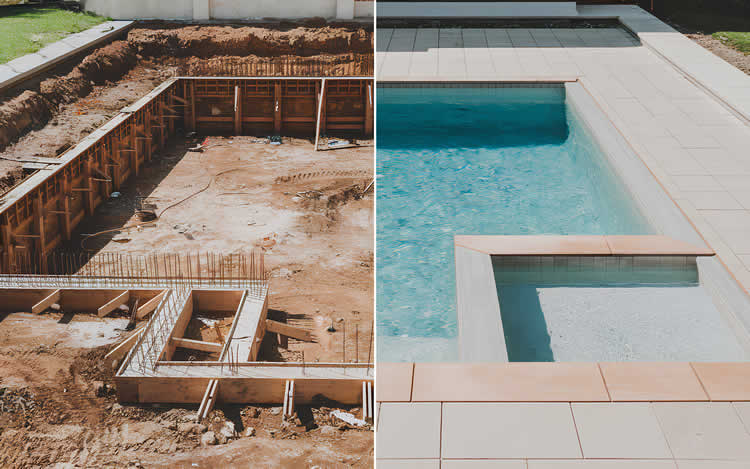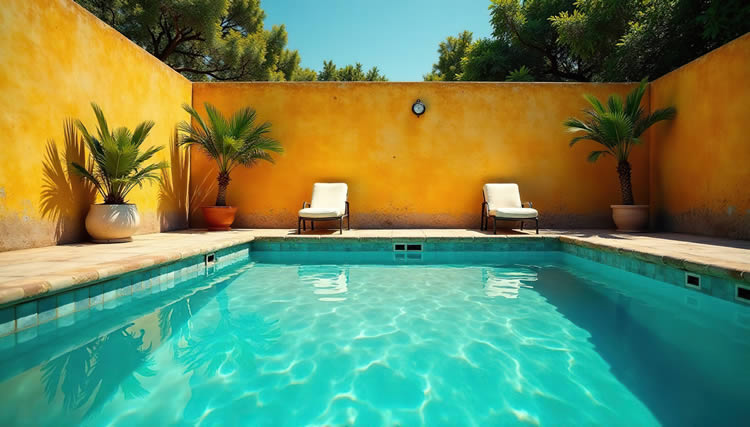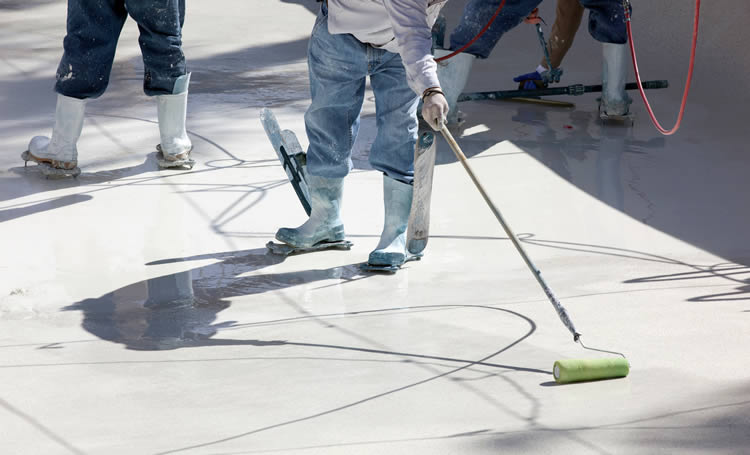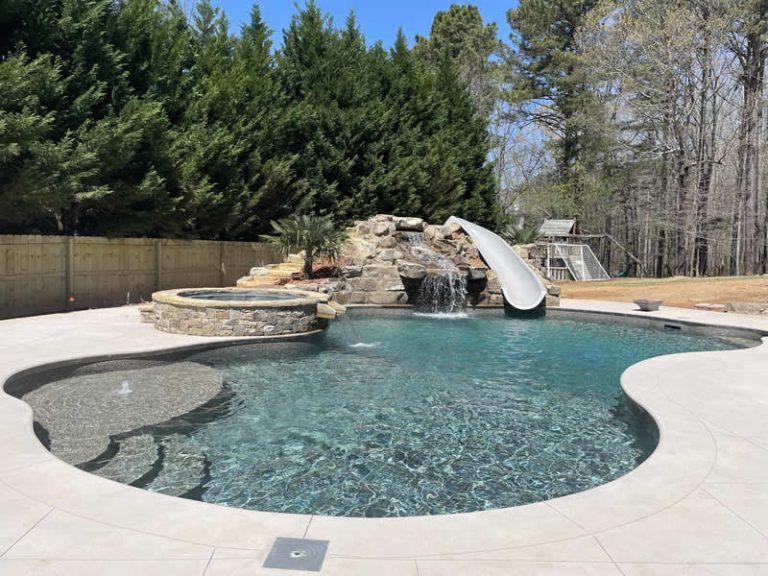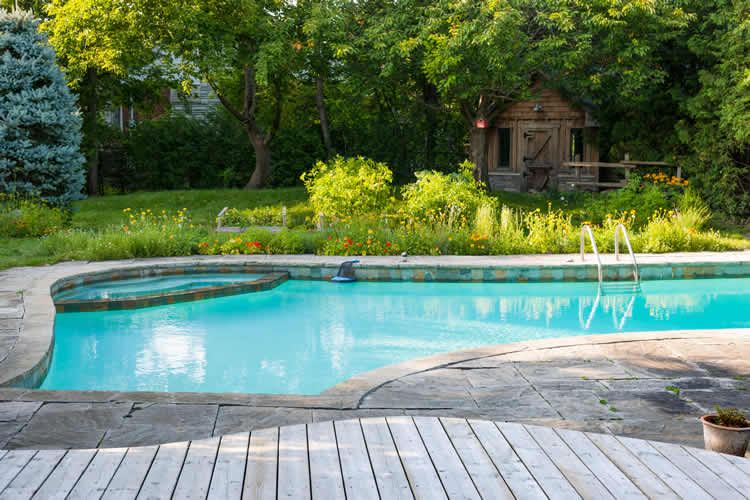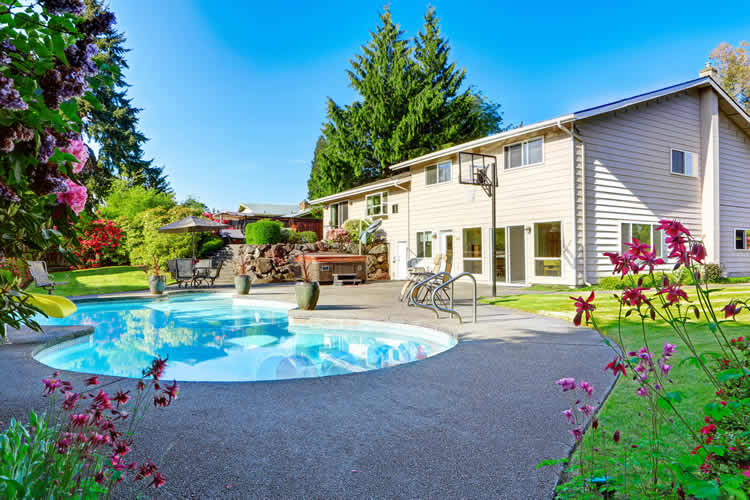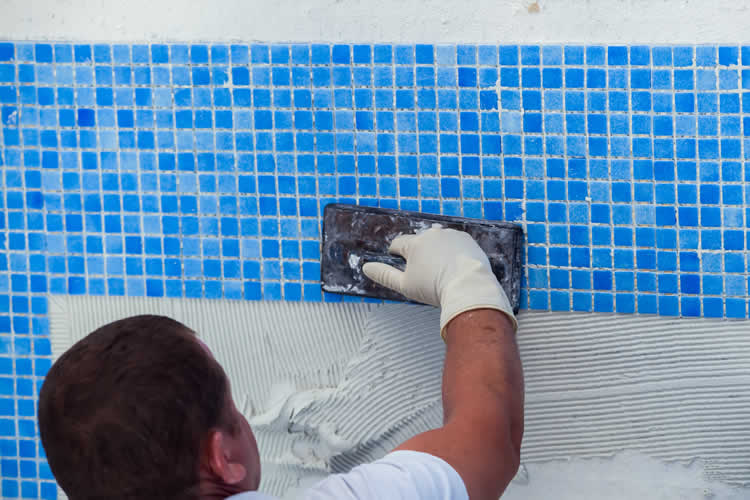Top Signs It’s Time for a Pool Remodel
No one wants to admit it, but pools age — and not always gracefully. Over time, weather, chemicals, and simple wear can make your once-beautiful backyard centerpiece look tired, cost more to maintain, and feel harder to enjoy.
Many Georgia homeowners try to stretch one more season with a quick repair or patch, but eventually, the smarter (and more economical) choice is a full remodel. So how do you know when you’ve reached that point? Let’s walk through the clearest warning signs that it’s time to give your pool a new start.
1. The Surface Feels Rough or Looks Dull
When your feet start catching on rough patches or your pool’s color has gone from bright blue to faded gray, your finish is breaking down.
Plaster and quartz finishes typically last 10–15 years in Georgia’s warm climate. Beyond that, the constant chemical exposure and temperature swings cause etching, discoloration, and pitting.
What to do: Resurfacing with a pebble or quartz aggregate gives your pool a smoother feel, richer color, and up to twice the lifespan of standard plaster.
2. You’re Constantly Adding Chemicals or Water
If your chlorine disappears overnight or your water level keeps dropping, it’s not “just evaporation.”
- Leaks: Cracks, aging plumbing, or damaged skimmers could be letting water escape.
- Chemical instability: Older surfaces and filters struggle to hold balance, forcing you to overcorrect with chlorine and acid.
What to do: Have your system pressure-tested. In many cases, a remodel with updated plumbing or new filtration pays for itself quickly through reduced chemical and water bills.
3. Your Equipment Is Outdated or Inefficient
A pump that sounds like a jet engine or a heater that takes all day to warm up are signs your equipment’s past its prime.
Older single-speed pumps and gas heaters waste electricity and fuel — especially in Georgia’s long swim season.
What to do: Upgrade to a variable-speed pump, heat pump, or automation system. They run quieter, cost less to operate, and can be controlled right from your phone.
4. Cracked Decking or Loose Coping
When the deck starts cracking or the coping separates from the pool edge, it’s more than cosmetic. It’s a sign that movement, settling, or water intrusion is occurring underneath. Left alone, those small gaps can widen into expensive repairs.
What to do: During a remodel, your contractor can re-level the deck, replace coping, and ensure proper drainage — preventing future structural issues.
5. Persistent Algae or Cloudy Water
If your water turns green every summer no matter what you do, it might not be your fault — it might be your pool’s design.
Aging surfaces and poor circulation create “dead zones” where water stagnates. Even the best filtration systems can’t overcome structural inefficiencies.
What to do: A remodel can fix circulation by repositioning return jets, updating plumbing, and installing modern filters.
6. You Avoid Using It
This one’s less technical but just as important: if you find yourself avoiding your pool because it’s “too much work” or “doesn’t feel relaxing anymore,” that’s a sign it’s not serving its purpose.
A remodel can change that — not just visually, but emotionally. Modern finishes, better lighting, and automation can make your pool inviting again.
Think of it this way: you shouldn’t feel like a maintenance tech every time you want to swim.
7. It Looks Outdated
Design trends evolve, and so does outdoor living. Tile patterns, deck materials, and shapes that looked great in the early 2000s can feel out of place today.
What to do: Even small design upgrades — like new waterline tile, travertine coping, or LED lighting — can make an older pool look brand new. If you’re planning to sell your home, a refreshed pool can significantly boost curb appeal and resale value.
8. Repairs Are Becoming Constant
If every spring brings another list of leaks, cracks, or pump issues, you’re probably past the point of “quick fixes.” Spending thousands on recurring patch jobs is like repainting a car that needs a new engine.
What to do: Step back, add up your last few years of repair bills, and compare them to a full renovation quote. You might be surprised how close the numbers are.
9. You Want to Add Features or Improve Safety
Older pools often lack modern safety or luxury features — like tanning ledges, energy-efficient lights, automatic covers, or anti-entrapment drains.
A remodel gives you a chance to make your pool safer, more comfortable, and better suited to your family’s lifestyle.
The Georgia Factor: Why Climate Matters
Georgia’s hot summers and frequent storms accelerate pool wear faster than in cooler regions. Sunlight fades finishes, high humidity stresses decks, and tree debris clogs filtration.
That means most pools here benefit from a major renovation every 15–20 years, even with good maintenance.
Frequently Asked Questions
Q: How long does a pool remodel take?
Most projects take 3–6 weeks, depending on complexity, materials, and weather.
Q: Do I need permits for a remodel?
Yes, if structural, electrical, or plumbing changes are involved. Reputable Georgia contractors handle this for you.
Q: Can I use my old equipment with a new finish?
Sometimes, but it’s often smarter to upgrade together. New finishes and old plumbing don’t always mix well long-term.
Final Thoughts
A remodel isn’t just about fixing what’s broken — it’s about rediscovering the joy of having a pool. Whether you’re chasing efficiency, safety, or a fresh modern look, the right renovation can make your backyard feel brand new again.
At My Aqua Fun Pools, we specialize in helping Georgia homeowners recognize when it’s time for a change — and delivering renovations that look stunning, function flawlessly, and last for years.
Let’s Talk …
Let us take care of your Pool & landscape
At Aqua Fun, we don’t just build pools — we build relationships that last for seasons to come. Our team takes the time to understand your space, your needs, and how you actually use your backyard. Then we craft solutions that make every swim, soak, or gathering more enjoyable. It’s not about selling you more; it’s about helping you get it right.
If you’ve been thinking about improving, repairing, or re-imagining your pool, let’s talk. We’ll meet you where you are, explain your options clearly, and make sure the whole process feels simple and stress-free. That’s the Aqua Fun way — real people, real care, and results that speak for themselves.
Mon – Fri
8:00 – 6:00

